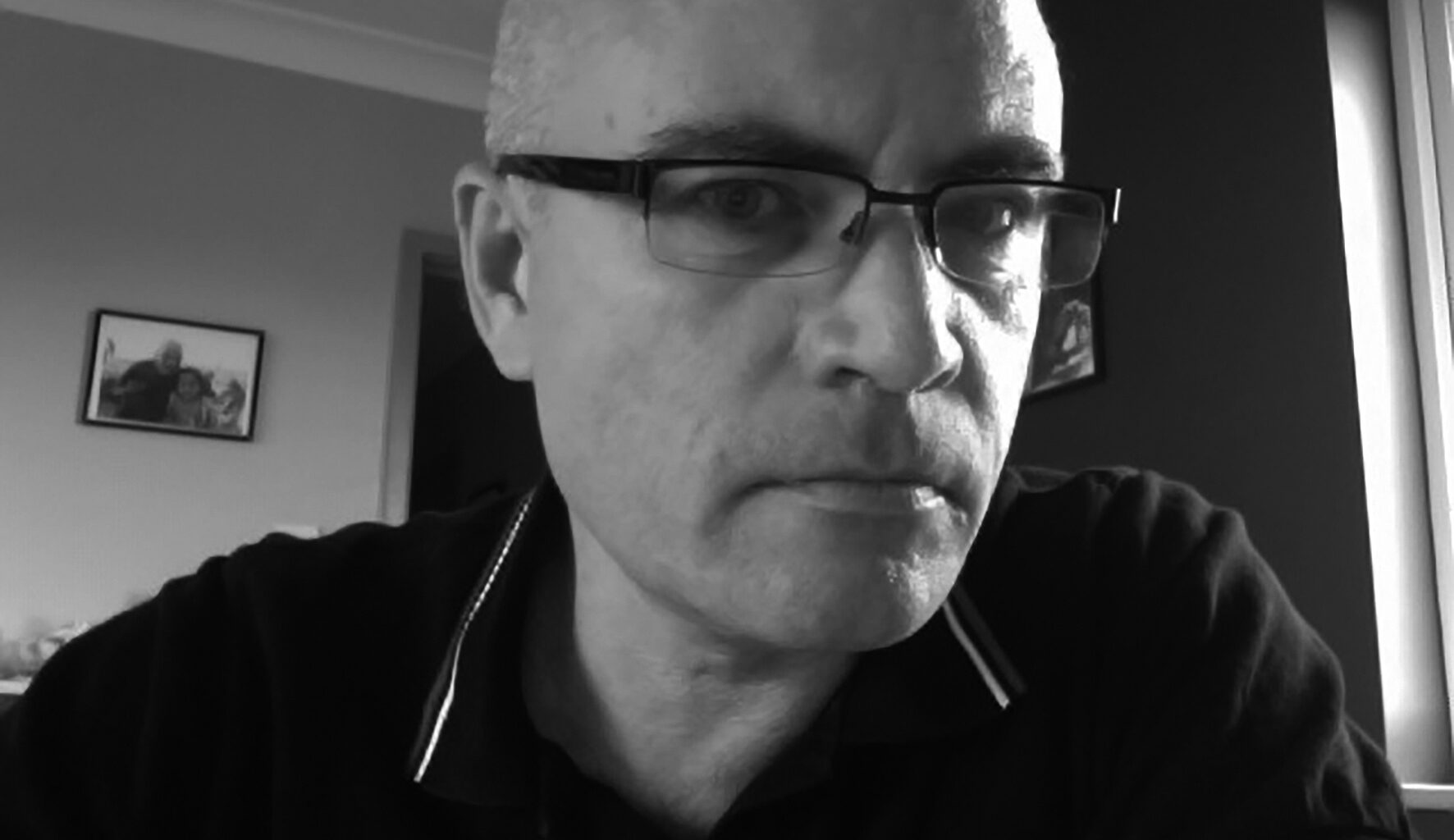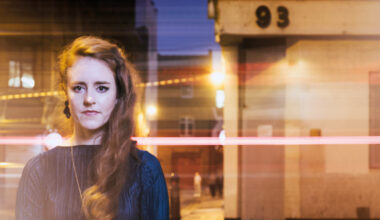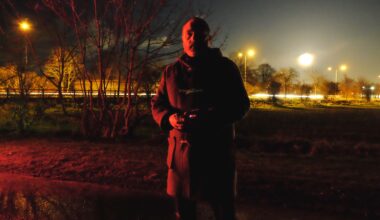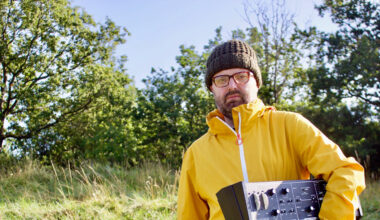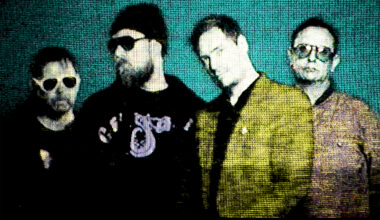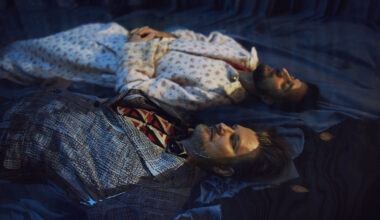Electronic Sound contributor and author David Stubbs’ book ‘Future Days’ is the first comprehensive overview of the krautrock scene and the cultural and socio-political atmosphere from which it came. In this exclusive excerpt, David discusses Kraftwerk’s ‘Autobahn’ and places it in the wider context of its day
The track ‘Autobahn’ would define Kraftwerk with an expansive exactness that’s quite remarkable given their lengthy gestation period. All of Hütter and Schneider’s preoccupations about the cultural colonisation of Germany by the USA, their desire to supplant American pop with a newly minted equivalent that was German in origin, were realised in urbane, spectacular fashion on ‘Autobahn’ – the moment at which the Kraftwerk project truly rolled out into the world.
While Kraftwerk’s “phase one”, their recorded work hitherto, painted electronic pictures, they were impressionistic, open to interpretation. My own take, for instance, on ‘Heimatklänge’, all that talk of dead trees and still water, might not be the mental image evoked in or meaning taken by another listener, or indeed Kraftwerk themselves. With ‘Autobahn’, however, in terms of the picture it paints, it is as vivid and figurative and indisputable as Emil Schult’s eerily bright, deceptively banal and depthless, faintly Hockney-esque cover artwork. It is, at surface level, a brilliantly evocative sonic depiction of a car journey, using a paintbox of chromium-plated melodies and sweeping synth strokes, all of it based on a shuttle series of motorway journeys they made to glean noises and sensations they could rework into music using their newly acquired sequencer, which enabled them to achieve precision and clarity. The shutting of the car door. The ignition, the hooter. The gentle grinding through the lower gears. The steady negotiation of the minor roads out of the city, or suburb, travelling hopefully. The left and right turns, conveyed in swerving Moog flourishes. The exquisite monotony. And then, looking right and left at 3:17 minutes, joining the major road itself, the “graues band”, bowling along at a swift but unhurried pace, the lush scenery reflected in Schneider’s reverberant flute (making its last ever appearance in the Kraftwerk oeuvre) and the modified strings of guest guitarist/violinist Klaus Röder. Then, a darker, busier Moog passage, in which the traffic gets more hectic, with overtaking, indications and bumper-to-bumper tension, horns, cars flashing back on the other side of the carriageway. Finally, 16 minutes in, a pleasant fatigue sets in as the shadows of the day lengthen, and the journey wends hastily to its weary end, along bending, sodium-lit ring roads.
As if all this is not literal enough, there are Kraftwerk’s very first lyrics, penned by Emil Schult and delivered in a deadpan chant by Hütter and Schneider. The English translation does not do justice to the rhythms of the original German, or such details as the pun on The Beach Boys’ “fun, fun, fun” in “fahr’n fahr’n fahr’n” (“travel, travel, travel”) or the gently explosive, lyrical joy of the word “Glitzerstrahl” (“glittering rays”), giving the lie to the notion that German is inherently, phonetically unsuitable for pop verse. However, it is all surface and description, like a school child’s essay. The song describes, in plain and unaffected terms, the wide valley that lies ahead, the glittering sun shining down approvingly on the tableau; it notes the greyness of the highway, as well as the green which offsets it and, of course, the whiteness of its stripes. And now, we are switching on the radio.
There it all is, in plain, lyrical sight and sound – and as a straightforward celebration alone it certainly works magnificently. It is about what it is about, and that seems to be that. But beneath this disingenuous, Fluxus-like simplicity lurks a host of implications. Who celebrates a motorway in pop music, and why? Cars, yes, as desirable, phallic, chrome and fender objects in their own right, and for picking up girls, the revving of the engine as a measure of potency and purring desire. But the motorway, the journey, the scenery? How blandly European. Where’s the male pulse, the full throttle, the roaring, tearaway passion, the faintly non-sanctioned feeling of getaway from the bourgeois, rabbit hut confines of the ‘burbs? None of that is intimated on ‘Autobahn’, least of all in the choice of vehicles on the cover – a black, somewhat authoritarian Mercedes and a small family Volkswagen. What gives? Hütter’s recommendation that you listen to ‘Autobahn’, then go out for a drive on the motorway to “discover that your car is a musical instrument”, only added a Cageian twist.
Then there is the loaded subject of the autobahn itself. For many, it carried implications of the Nazi era, as did the Volkswagen, the “people’s car” favoured by the Führer and, as it happened, Kraftwerk themselves. Work on the autobahn network was greatly escalated (with forced labour) under Hitler, who had hoped it would be useful in mobilising the military and their equipment, as well as enabling Germans to travel freely about their unified country, connecting via long, unspooling grey ribbons what was not so long ago a fragmentary collection of mutually mistrustful principalities. Were not the autobahns fraught with such associations, the concrete dreams of the Third Reich still in our midst? Surely to trill uncritically about the autobahn, carved monstrously across the verdant landscape in a brutal, violent imposition of modernist authoritarianism, was to be guilty of gross, wilful naïveté?
As it happens, the autobahns had originally been dreamt of in the Weimar era, and the first small stretch of motorway, which travelled the short hop from Cologne to Bonn, opened by future post-war Chancellor, then Mayor of Cologne, Konrad Adenauer, in 1932, proved too structurally weak to be of much use bearing heavy machinery such as tanks, which had to be conveyed by train. However, there was still something funny-smelling about Kraftwerk’s apparently odourless, synthesised tone poem. In blues/rock ’n’ roll, the road was fraught and picaresque, dusty and precarious, in which hopes and fears were bundled up in a man’s knapsack or loaded into the back of his beat-up vehicle. On Canned Heat’s bluesy ‘On The Road Again’, the road was the only lonesome option available to an abandoned child, rootless and forced to move along, the only American way, the freeway.
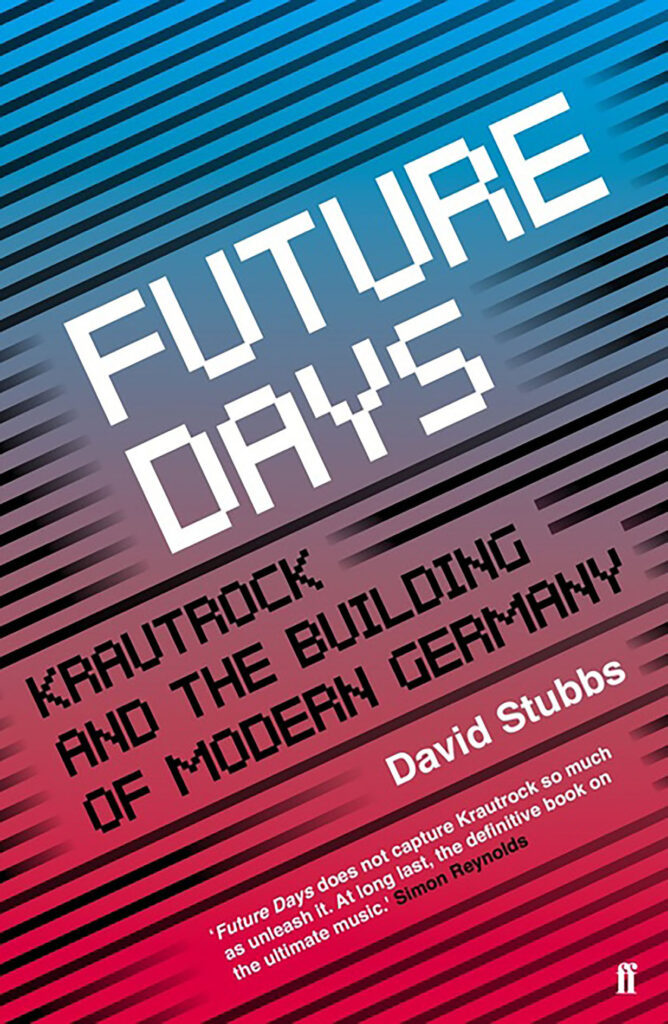
Stevie Wonder, meanwhile, who was perhaps Kraftwerk’s closest relation instrumentally, undertook a fraught journey of his own on ‘Living For The City’, the boy from “hard time Mississippi” making his way by road up north to New York, barely off the coach before he’s immediately and lucklessly caught up in a drugs bust and sent down for 10 years. Then there was Bruce Springsteen on ‘Thunder Road’, which is couched in an inflamed, desperate optimism – the only radio is that of Roy Orbison singing for the lonely, and the last chance for them to meet their destiny is to climb into a car with a “dirty hood”, armed only with a guitar – “We got one last chance to make it real / To trade in these wings on some wheels”.
Guitars, babes, authenticity, thunder – it’s an altogether different kind of journey from that taken together by the young men of Kraftwerk on the peaceable stretches of ‘Autobahn’, just one of their many such travels by road. Springsteen, as ever, is preoccupied with keeping it “real”, yet his febrile lyrical visions are sheer rock ’n’ roll mythological hokum. Kraftwerk may look and sound “inauthentic” but at least ‘Autobahn’ bears a closer resemblance to life as it is lived.
All of this might have made Kraftwerk appear amusingly insipid and ephemeral in 1974/75, one-dimensional Teutonic chancers who would be blown away by the first hot gust of raw rock ’n’ roll passion. But beneath the smart lapels of their well-tailored exteriors, beat a profound sense of artistic purpose with long-term consequences even they might not have anticipated.
For Kraftwerk, celebration of the autobahn was not mere bourgeois cheerleading but a return to the pre-war Bauhaus principles in which art and technology were melded in a single purpose; another branch of the broader project of 20th century art to connect art with life as lived by the great mass of people who had left behind centuries of peasant ancestry for the new world. “Our roots were in the culture that was stopped by Hitler,” said Hütter, “the school of Bauhaus, of German expressionism.”
The “expressionistic” aspect of Kraftwerk would become more muted, more implicit from hereon in, but nevertheless the point stood. There were excellent reasons for singing and playing about the autobahn: to counter the somewhat agrarian strain of technophobia which was still a commonplace of post-hippy rock, and certainly of early krautrock, with its tendency towards rural, communal retreat; to assert the aesthetic value of function in the machine age, rather than choose to recoil in postures of alienation from all that metal and concrete and automation that did, after all, form thebasis of modern existence for the lucky ones; furthermore, to claim for Germany a central artery of rock ’n’ roll mythology – the road.
Route 66 has always been the predominant stretch of rock ’n’ roll highway, its Santa Monica Boulevard end in particular strewn with points of iconic interest, from motels to gravestones, involving everyone from Linda Ronstadt to The Doors to The Eagles to The Ramones. It’s been celebrated in song – ‘(Get Your Kicks On) Route 66’, composed by Bobby Troup in 1946 and later covered by Nat King Cole and Chuck Berry among others, “The Long Red Line” by Mary Cutrufello, “Used To Be” by The Red Dirt Rangers and “2200 Miles” by The Mad Cat Trio all pay homage to the freeway. Its lineage is as old as the blues itself. Stretching from Chicago to Los Angeles, it’s become symbolic of the American dream and of destiny, for those traditionally longing to escape the flyover dustbowl of the Midwest in search of the sunlit fertility of the West Coast. Travelling along it in today’s more prosperous, homogenous times, it doesn’t feel like an escape to any place that different – rather a long, long journey deep into America itself. So it is with the autobahn – a lengthy journey that takes you no place but deeper into Germany itself. (Eerily, some old stretches of the autobahn remained uncompleted after the war – these “ghost highways” are still visible from the perspective of orbit, if not to travellers on the ground.) It can’t boast the cluster of reference points of Route 66, but thanks to Kraftwerk, it has an enviable, perhaps unparalleled visibility in the popular music canon.
It was, of course, as Kraftwerk admitted themselves, an idealised, even pastoral view of the autobahn, which in reality is an increasingly congested and contested artery of the German transport system that might more realistically be soundtracked by some compressed, high-turbo piece of Euro-techno. Strangely, there is, even at this stage, a sense that Kraftwerk were not so much embracing techno-modernity as taking deep draughts from the clean, inspirational air of the countryside, the vast interior of Germany which had been the cradle for so much new German music. On side two of the album, the two treatments of ‘Kometenmelodie’, one rendered in wispy, electric charcoal, the other in bright neon, the nocturnal atmospheres of ‘Mitternacht’, and the almost field recording-like simulations of dawn birdsong and the pan pipes of a glad spring morning that light up ‘Morgenspaziergang’ (‘Morning Walk’) are minor musical matters, but they do significantly reflect a lingering bucolic strain, perhaps the result of recording in Conny Plank’s new studio in a remote countryside location outside Cologne. This, however, would be the last time Kraftwerk would take inspiration from the rural. Hereafter, all would not be green, not hippy, not krautrock, not kosmische but Technik. No more flutes.
About David Stubbs
David Stubbs is one of the UK’s best-known music journalists. He co-founded the Oxford magazine Monitor with Simon Reynolds and went on to join the staff of Melody Maker, where he worked until its closure. He later worked for the NME, Uncut and The Wire and his work has also appeared in The Times, The Guardian, GQ and The Quietus, as well as Electronic Sound. He has written a number of books, including a song-by-song profile of Jimi Hendrix and ‘Fear Of Music: Why People Get Rothko But Don’t Get Stockhausen’, a comparative study of 20th century avant-garde music and art.
“I first interviewed Ralf Hütter by phone in 1991, around the release of ‘The Mix’,” says David. “We had a splendid chat for an hour, then after we’d finished I went to take a bath, only for the phone to ring just as I’d sunk into the water. I stomped out and irritably picked up the receiver, only to find it was Ralf again, wishing to clarify some remarks he’d made about Stockhausen and musique concrete, which I duly noted, naked and dripping wet.”
David Stubbs’ ‘Future Days: Krautrock And The Building Of Modern Germany’ is published by Faber & Faber
